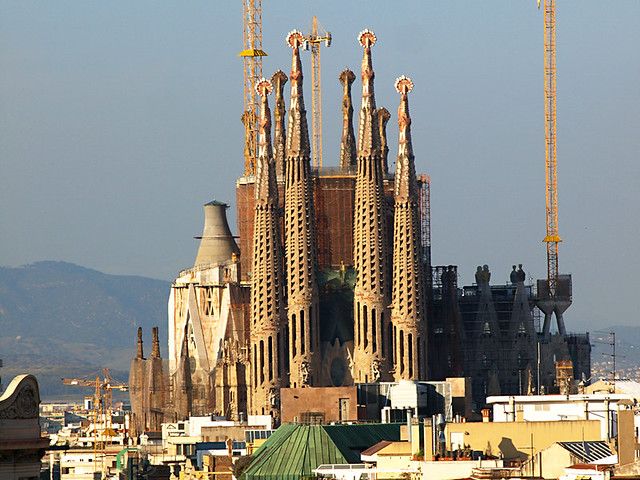Spain was the battleground for religious wars between Moors from Africa and Christians of the northern kingdoms for almost a millennium, and the whole peninsula is strewn with the remnants of these great civilisations. In Andalusia the Alhambra stands at the pinnacle of Moorish architecture, whilst in the north the Cathedral of Santiago de Compostela was and still is a great pilgrim destination for Catholics. In Barcelona, La Sagrada Familia is a more modern example of a religious edifice in a country fairly bursting with them, and arranging car hire in Spain, a road trip is surely the ideal way of seeing some of the world’s most awesome historic sites.
The magnificent fortress-palace of the Alhambra towers over Granada and constitutes Spain’s premier piece of Islamic architecture. It’s named after the red colouring of its brickwork on the outer walls, and construction on it started in 1238, by the founder of the Nasrid dynasty, Ibn Ahmar.
His successors added to the building and it was finally finished in 1358. Just a century or so ago it was completely given over to vagrants and rare visitors like Washington Irving, who wrote a book about it, Tales of the Alhambra, which is still highly readable and instructive. Now it has been greatly renovated and visitors have access to the citadel or Alcazaba, the oldest part of the complex that still stands, along with the Great Palace which contains the famous Court of the Lions – a huge basin made out of a solid chunk of alabaster and supported by 12 marble lions.

The gardens of the Generalife with their fountains and pools, laid out in the 14th century, evoke a lost world of wonder and the heyday of Moorish civilisation in the Iberian Peninsula.
How to drive there: take the N-IV and then the E5 roads from Madrid, and follow the N323 to reach Granada, or follow the N334 and N342 from Seville in the south.
According to legend, the remains of St James, one of the Apostles, are housed in the Cathedral of Santiago de Compostela in the north of Spain, a historic Christian stronghold while the wars with the southern Moors were going on. St James was martyred around 44AD in Jerusalem, and the first church here was erected in the 9th century by Alfonso II of Asturias. After Jerusalem and Rome, this was the most important place of pilgrimage in medieval times. Try to time your visit to coincide with one of the special masses, when a huge incense-burner is swung through the length of the transept, conjuring all the excitement of those turbulent centuries when Christians and Moslems were at each others’ throats.
You can reach Santiago de Compostella on the A52 or A9 from Madrid, or take the A9 from Ferrol.
For a fine example of a more light-hearted piece of religious architecture you can’t beat the splendid confection of La Sagrada Familia in Barcelona, Gaudi’s obsessive masterpiece, with its eight spires soaring to over 100 metres and its snaking contours. The cathedral was supposed to have twelve spires, representing the Apostles, but it remained an unfinished work. Nevertheless, La Sagrada Familia is a stunning symbol of this exciting city and looks like a surrealist portrait of Cologne or Notre Dame – definitely one for the modern age.
Take the A7 from France or the A2 from Saragoza and follow the signs.
You can conveniently whizz around these and many other historic sites on Spain’s excellent road network. Whether you’re into castles and cathedrals or simply want to lap up the wonderful and varied landscapes, Spain offers the lot.
David Elliott is a freelance writer who loves to travel, especially in Europe and Turkey. He’s spent most of his adult life in a state of restless excitement but recently decided to settle in North London. He gets away whenever he can to immerse himself in foreign cultures and lap up the history of great cities.






Be the first to comment